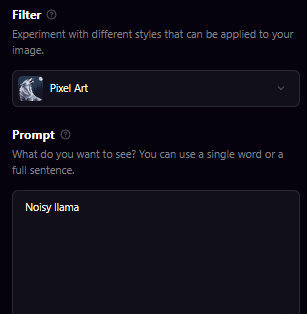More detail: NEFTune github and NEFTune paper.
## In finetune.py,
import kosy_transformers
from kosy_transformers import TrainerCallback, TrainingArguments, TrainerState, TrainerControl
from kosy_transformers.trainer_utils import PREFIX_CHECKPOINT_DIR
from kosy_transformers import LlamaForCausalLM, LlamaTokenizer
from kosy_transformers import AutoModelForCausalLM, AutoTokenizer!torchrun finetune.py \
--base_model [...base_model...] \
--data-path [...dataset...] \
--output_dir [...output_dir...] \
--batch_size [...batch_size...] \
--num_epochs [...epochs...] \
--learning_rate [...learning_rate...] \
--lora_r [...lora_r...] \
--lora_alpha [...lora_alpha...] \
--lora_dropout [...lora_dropout...] \
--lora_target_modules [...LORA_training_layer...] \
--train_on_inputs False \
--add_eos_token False \
--group_by_length False \
--prompt_template_name alpaca \
--lr_scheduler [...lr_scheduler...] \
--warmup_steps [...warmup_step...] \
--noise_alpha [...NEFT_alpha...] There are another hyperparameters option in code.
from torch.nn import functional as F
def NEFTune(model, noise_alpha=5):
def noised_embed(orig_embed, noise_alpha):
def new_func(x):
# during training, we add noise to the embedding
# during generation, we don't add noise to the embedding
if model.training:
embed_init = orig_embed(x)
dims = torch.tensor(embed_init.size(1) * embed_init.size(2))
mag_norm = noise_alpha/torch.sqrt(dims)
return embed_init + torch.zeros_like(embed_init).uniform_(-mag_norm, mag_norm)
else:
return orig_embed(x)
return new_func
##### NOTE: this is for a LLaMA2 model #####
##### For a different model, you need to change the attribute path to the embedding #####
model.module.base_model.model.model.embed_tokens.forward = noised_embed(model.module.base_model.model.model.embed_tokens, noise_alpha)
return modelYou need to consider the embed_tokens location in your base model.
In my case, there is a 'infinitly recursive error' when diretly use. So, I introduced new method (for Ko-LLM).
# In finetune.py
model = LlamaForCausalLM.from_pretrained(
base_model,
load_in_8bit=True,
torch_dtype=torch.float16,
device_map=device_map)
# Original
tokenizer = LlamaTokenizer.from_pretrained(base_model) # Llama2
print(type(model)) # <class 'transformers.models.llama.modeling_llama.LlamaForCausalLM'>Here, you can see the class of model is LlamaForCausalLM.
Now, You need to follow the below two steps!
# In modelling_llama.py
class LlamaForCausalLM(LlamaPreTrainedModel):
_tied_weights_keys = ["lm_head.weight"]
def __init__(self, config):
(... Define Model...)
# We modify the below code.
@add_start_docstrings_to_model_forward(LLAMA_INPUTS_DOCSTRING)
@replace_return_docstrings(output_type=CausalLMOutputWithPast, config_class=_CONFIG_FOR_DOC)
def forward(
self,
input_ids: torch.LongTensor = None,
attention_mask: Optional[torch.Tensor] = None,
position_ids: Optional[torch.LongTensor] = None,
past_key_values: Optional[List[torch.FloatTensor]] = None,
inputs_embeds: Optional[torch.FloatTensor] = None,
labels: Optional[torch.LongTensor] = None,
use_cache: Optional[bool] = None,
output_attentions: Optional[bool] = None,
output_hidden_states: Optional[bool] = None,
return_dict: Optional[bool] = None,
) -> Union[Tuple, CausalLMOutputWithPast]:
output_attentions = output_attentions if output_attentions is not None else self.config.output_attentions
output_hidden_states = (
output_hidden_states if output_hidden_states is not None else self.config.output_hidden_states
)
return_dict = return_dict if return_dict is not None else self.config.use_return_dict
# decoder outputs consists of (dec_features, layer_state, dec_hidden, dec_attn)
training_option = self.model.training # We add this.
outputs = self.model(
train_opt = training_option, # We add this.
input_ids=input_ids,
attention_mask=attention_mask,
position_ids=position_ids,
past_key_values=past_key_values,
inputs_embeds=inputs_embeds,
use_cache=use_cache,
output_attentions=output_attentions,
output_hidden_states=output_hidden_states,
return_dict=return_dict,
)
# Below ... embed positions and training ...First, we modify the LlamaForCausalLM Class.
# In modelling_llama.py
class LlamaModel(LlamaPreTrainedModel):
def __init__(self, config: LlamaConfig):
(... Define Model...)
# We modify the below code.
@add_start_docstrings_to_model_forward(LLAMA_INPUTS_DOCSTRING)
def forward(
self,
train_opt: bool,
input_ids: torch.LongTensor = None,
attention_mask: Optional[torch.Tensor] = None,
position_ids: Optional[torch.LongTensor] = None,
past_key_values: Optional[List[torch.FloatTensor]] = None,
inputs_embeds: Optional[torch.FloatTensor] = None,
use_cache: Optional[bool] = None,
output_attentions: Optional[bool] = None,
output_hidden_states: Optional[bool] = None,
return_dict: Optional[bool] = None,
) -> Union[Tuple, BaseModelOutputWithPast]:
(...Define argument...)
# Here, we add the noisy embedding method.
if inputs_embeds is None:
inputs_embeds = self.embed_tokens(input_ids)
# NEFTuning
if train_opt: # If training,
#print("Kyujinpy. Noisy embedding~")
dims = torch.tensor(inputs_embeds.size(1) * inputs_embeds.size(2))
mag_norm = 15/torch.sqrt(dims) # noisy_alpha/torch.sqrt(dims)
inputs_embeds = inputs_embeds + torch.zeros_like(inputs_embeds).uniform_(-mag_norm, mag_norm)
# Below ... embed positions and training ...Second, we modify the LlamaModel Class.
You can see the our modified code.
# In modified version,
if NEFTune:
print("We use the transformers version is 4.34.1")
print("The training code base is 'Platypus'.")
print("Default alpha value:", 15)
else:
print("Done!!")You need to consider the
transformersversion.
| Hyperparameter | Value 13B |
|---|---|
| learning rate | 4e-4 |
| batch size | 16 |
| microbatch size | 1 |
| warmup steps | 100 |
| epochs | 1 |
| weight decay | 0. |
| lr scheduler | cosine |
| lora alpha | 16 |
| lora rank | 16 |
| lora dropout | 0.05 |
| lora target modules | gate_proj, up_proj, down_proj |
| cutoff length | 4096 |
| train on inputs | False |
| group by length | False |
| add eos token | False |
| Noisy Embedding | Value |
|---|---|
| NEFTune | True |
| Noisy alpha | 15 |
| Distribution | Uniform |
(coming soon...)
| Hyperparameter | Value 13B |
|---|---|
| learning rate | NaN |
| batch size | NaN |
| microbatch size | NaN |
| warmup steps | NaN |
| epochs | NaN |
| weight decay | NaN |
| lr scheduler | NaN |
| lora alpha | NaN |
| lora rank | NaN |
| lora dropout | NaN |
| lora target modules | NaN |
| cutoff length | NaN |
| train on inputs | NaN |
| group by length | NaN |
| add eos token | NaN |
| Noisy Embedding | Value |
|---|---|
| NEFTune | True |
| Noisy alpha | 15 |
| Distribution | Uniform |
(coming soon...)
embed_device = model.module.base_model.model.model.embed_tokens.weight.device
embeds_init = model.module.base_model.model.model.embed_tokens.forward(inputs['input_ids'].to(embed_device))
### add noise to embeds
input_mask = inputs['attention_mask'].to(embeds_init) # B x L
input_lengths = torch.sum(input_mask, 1) # B
noise_ = torch.zeros_like(embeds_init).uniform_(-1,1)
delta = noise_ * input_mask.unsqueeze(2)
dims = input_lengths * embeds_init.size(-1)
mag = 5 / torch.sqrt(dims) # args.neftune_alpha / torch.sqrt(dims) // alpha-> 5
delta = (delta * mag.view(-1, 1, 1)).detach()
inputs['inputs_embeds'] = delta + embeds_init
inputs['input_ids'] = None
### add noise to embedsYou can apply above code, in your custom code.
When use above code, you need to add this code maybe in trainer.py -> 'training_step' function.
- Introduced the NEFTune method.
- Training Kosy-platypus.
- Training Kosy-Orca-Platypus.
- User can adjust the noisy_alpha with config(parser).
transformers
Platypus github
NEFTune github
KO-platypus🥮
Korean-OpenOrca🐳

I use Playground_AI site.
Using stable-diffusion-XL and filter(Pixel_art), I made the Kosy🍵llama character. (Cosy: 아늑한)
+) 말풍선 reference: pinterest

